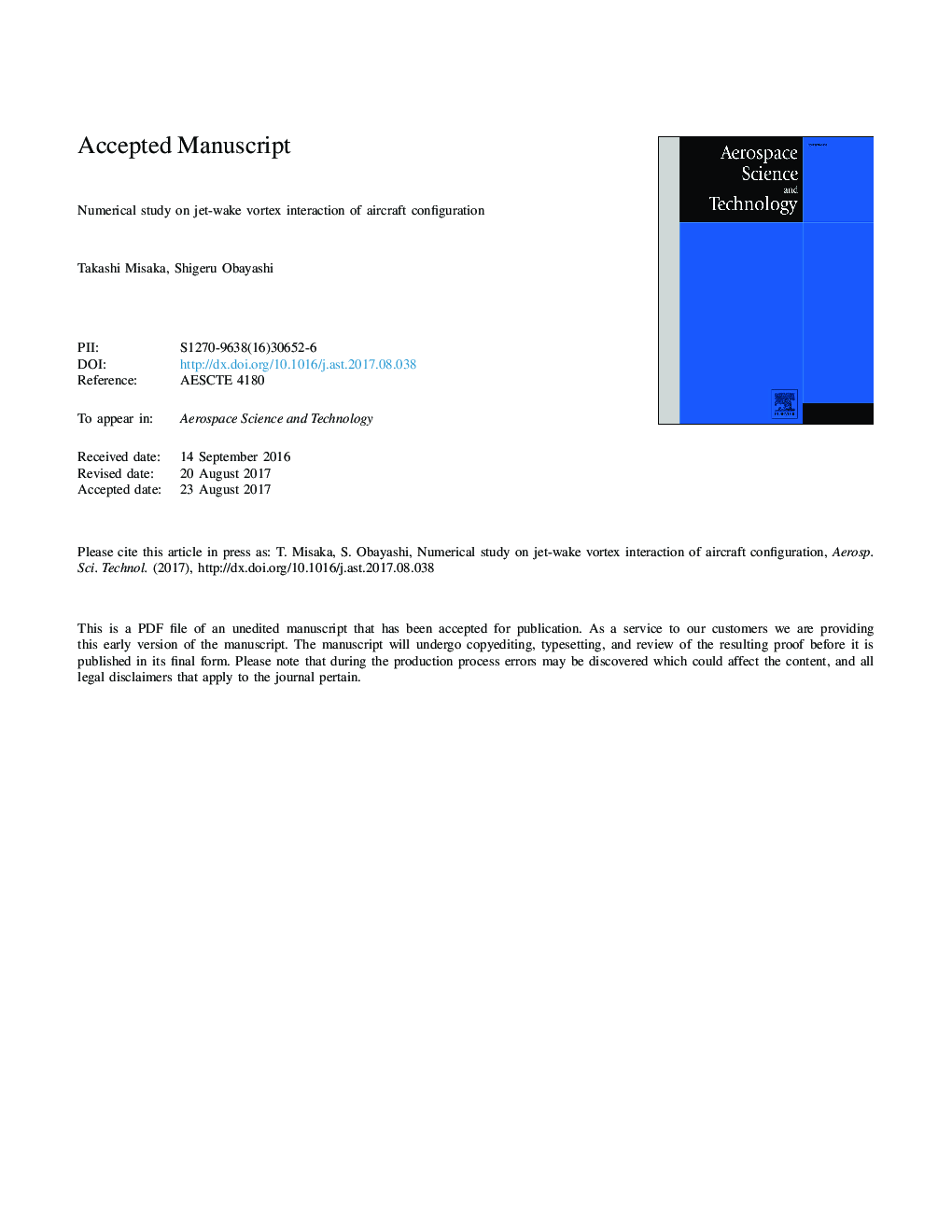| Article ID | Journal | Published Year | Pages | File Type |
|---|---|---|---|---|
| 5472640 | Aerospace Science and Technology | 2017 | 23 Pages |
Abstract
The interaction of aircraft exhaust jet and wake vortex generated from a realistic aircraft configuration was numerically studied from the early phase until the complete roll-up. For numerical simulation we employed an unstructured mesh Reynolds-averaged Navier-Stokes (RANS) solver for the flow around an aircraft model, while a Cartesian mesh large-eddy simulation solver implemented on the framework of the building-cube method (BCM) was used for the simulation of the mid- to far-field wake. We especially investigated the feasibility of a coupling approach of the steady RANS solver and the Cartesian LES solver in the simulation of the jet-wake vortex interaction, where unsteady velocity fluctuations are stochastically reproduced based on RANS turbulence variables. The results showed that a multi-level Cartesian mesh of the BCM was effective to capture the evolution of aircraft wake including exhaust jet. The velocity profiles of a wake vortex are compared with several vortex models, which reveals that the velocity profiles fit with different vortex models depending on the vortex ages. The normalized temperature of exhaust jet is compared with the experiment, which confirms that the temperature information is appropriately transferred from the near- to the far-field simulation.
Related Topics
Physical Sciences and Engineering
Engineering
Aerospace Engineering
Authors
Takashi Misaka, Shigeru Obayashi,
